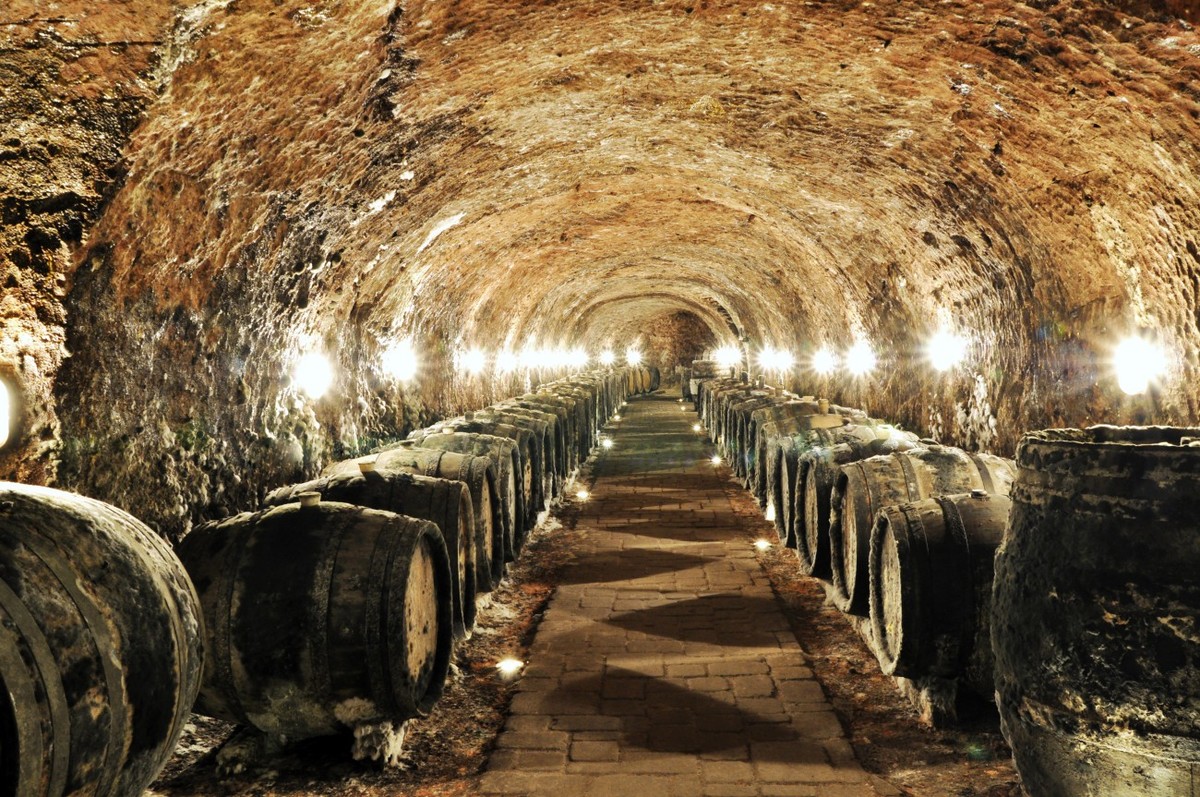From grape to glass: The fascinating journey of Tokaj wine
Tokaj wines is based on three grape varieties: Furmint , Lipovina and Muscat yellow . These varieties have a unique ability to form cibebs - clustered berries attacked by the noble fungus Botrytis cinerea . The mold destroys the skin of the berries, which leads to the evaporation of water and the concentration of sugars and aromatic substances in the raisins. The key condition for the formation of cibeb is a long sunny autumn with morning mists, typical of the Tokaj wine-growing region.
The Tokaj viticultural area is spread over the territory of two countries - 90% on the Hungarian side (approximately 5500 ha of vineyards) and 10% in Slovakia (907 ha). The Slovak part includes the cadastres of seven municipalities: Čerhov, Malá Tňa, Veľká Tňa, Černochov, Bara, Viničky and Slovenské Nové Mesto. The area is protected from the north by the Zemplín Hills, the soil is of volcanic origin, and thanks to the southern winds from Hungary, autumn in Tokaj is long and dry, with ideal conditions for the development of the noble mold Botrytis cinerea.

The dominant variety is Furmint , which is grown on approximately 50% of the vineyards. Its tassels are smaller, dense and susceptible to downy mildew. Wines from Furmint have higher acidity and smell of linden flowers, apples and pears during reductive processing. Furmint adds body and structure to Tokaj wines. Another important variety is Lipovina (25-30% of vineyards), which has long, sparse bunches with small berries . Its wines are characterized by a delicate aroma and an exotic bouquet. Yellow Muscat , the oldest and rarest Tokaj variety, makes up 10-15% of the vineyards. It ripens earlier and provides beautifully aromatic wines with aromas of agave flowers and elderberry. It excels in creating cibeb .
The character of Tokaj wines is determined not only by terroir and varieties, but also by specific production technology with minimal maturation times. Tokaj wines are distinguished from other Slovak wines by oxidative processing , in which the presence of oxygen during the processing of grapes and wine leads to the appearance of a typical "bread" taste. The company J & J Ostrožovič produces six types of traditional Tokaj wines using the oxidative method, while the basis is hand-picked cibeby . Their production is economically demanding, so in years with less occurrence of cijebs, Tokaj native wines (dry and sweet) are also produced , in which the grapes are picked together with any cijebs as they "were born". Natural wines are aged for at least two years, of which at least one year in oak barrels in tuff cellars.

In exceptional vintages, Tokaj selections - 3 to 6 putna wines - are produced from the best vineyards . The amount of added casks per 136-liter cask ( Gönczký sud ) determines whether it will be a 3- or 6-put selection. These wines are aged for at least three years, of which at least two are in oak barrels in Tokaj cellars. The cellars are excavated in tuff, black cellar mold Cladosporium reigns in them cellar , which lives in symbiosis with Tokaj wine. The temperature in the cellars is around 10-12°C and the humidity reaches 90%.
In the cellar of the Ostrožovič winery, you can relax with a glass of fragrant Tokaj wine until late in the evening and then spend the night comfortably in the guesthouse of the winery.

